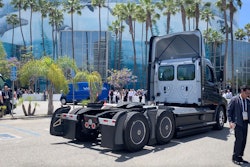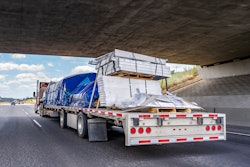Trucking news and briefs for Monday, May 16, 2022:
FMCSA tells Congress insurance industry holding back increased insurance requirements
In a report to Congress this month regarding the current financial responsibility requirements for motor carriers, brokers and freight forwarders, the Federal Motor Carrier Safety Administration said the insurance industry's lack of transparency is a big reason the agency has yet to get behind any increase in carriers’ $750,000 liability insurance requirement.
The report follows others issued on the subject over nearly 10 years since FMCSA study of the issue was required by law in the 2012 MAP-21 highway bill.
The agency said the minimum insurance requirements for carriers were set in the 1980s and noted that medical and other costs related to “catastrophic crashes have increased significantly.” FMCSA also noted that, even though such catastrophic crashes are relatively rare, “the costs of resulting property damage, injuries, and fatalities can significantly exceed the minimum levels of financial responsibility.”
Despite this, FMCSA said much of the information it would need to examine the adequacy of current insurance requirements is not readily available because many lawsuits are settled out of court and subject to non-disclosure agreements. Additionally, the agency said a lot of insurance company information is proprietary.
“Accordingly, FMCSA is able to provide only a limited assessment of the appropriateness of the motor carrier financial responsibility requirements at this time,” FMCSA said in its report. “In order for FMCSA to adequately assess the sufficiency of the financial responsibility requirements, the agency would need access to more detailed information from the insurance industry, including anonymized claims data.”
The agency said efforts to obtain such information using existing legal authorities and through requests for voluntary disclosure have been unsuccessful.
NFI puts electric truck to work for Puma
 NFI is using this electric Freightliner in drayage operations for sports apparel company Puma, one of NFI's customers.
NFI is using this electric Freightliner in drayage operations for sports apparel company Puma, one of NFI's customers.
The Freightliner eCascadia, which is operated by Puma’s drayage partner NFI (CCJ Top 250, No. 21), is a first test vehicle. By the third quarter of 2022, the company expects to have five electric trucks in operation to carry goods from the port to the warehouse.
The electric trucks delivering goods from the port to the Torrance distribution center are a further building block in Puma’s strategy to reduce carbon emissions in its entire business. Last month the company announced that it had reduced its own carbon emissions and those from purchased energy by 88% between 2017 and 2021. Carbon dioxide emissions also fell in the company’s supply chain, the most carbon intensive part of its business, in spite of strong revenue growth in the same period.
“While electric vehicles are already quite common for passenger cars, electric trucking is only starting out,” said John Amato, Senior Vice President at NFI. “We are excited that Puma has been willing to join us in this project and to use this new technology in the company’s day-to-day operations.”
Last of Michigan weight restrictions lifted
Effective 6 a.m. Friday, May 13, the Michigan Department of Transportation lifted weight restrictions on all state trunkline highways in the entire state. State routes typically carry M, I, or US designations.
Weight restrictions are implemented during the spring frost thaw period and are now completed for the 2022 season.
County road commissions and city public works departments put in place their own seasonal weight restrictions, which usually, but not always, coincide with state highway weight restrictions. Signs are generally posted to indicate which routes have weight restrictions in effect.












